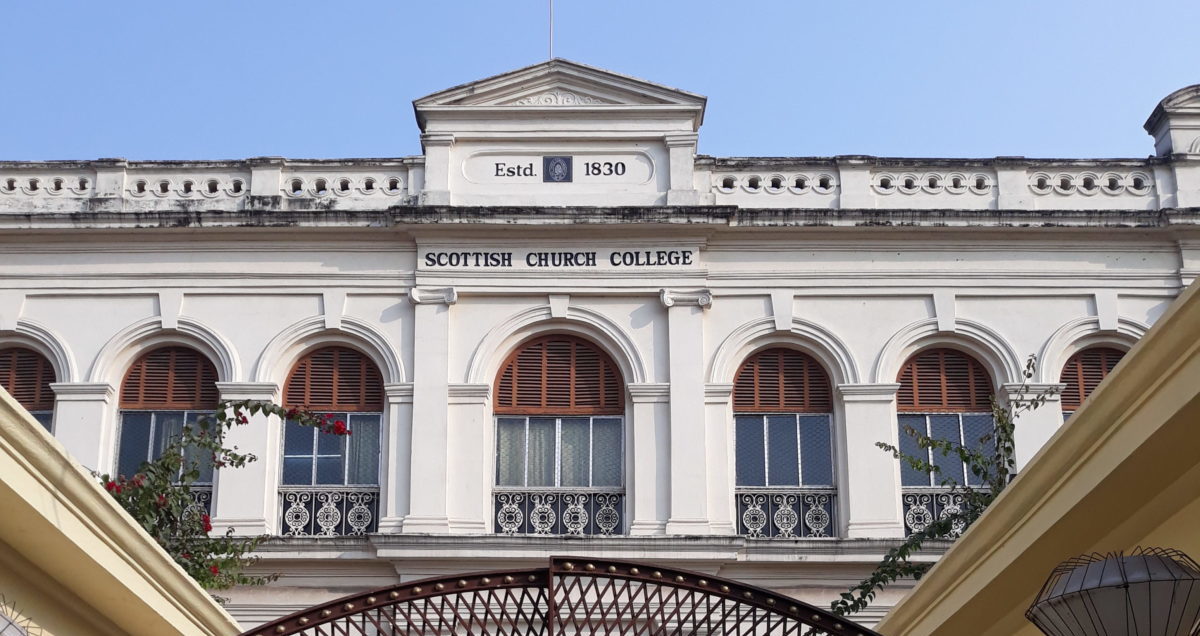Following an initial writing residency on the Isle of Lewis in August 2017 – reflections on which you can read on this site – last month novelist Abir Mukherjee and poet Nalini Paul travelled to Kolkata to work with two India-based writers: poet Sampurna Chattarji and novelist and journalist Sandip Roy. The authors are encouraged to creatively respond to items from the Mackenzie Collection, a rich and renowned collection of Asian art collected by Stornoway-born Colonel Colin Mackenzie during his time in India as its first surveyor general, and give new voice to the ongoing relationship between Scotland and India as these nations continue to define and redefine their contemporary relationships. The group will share their conclusions at the 2018 Edinburgh International Book Festival
The following piece is the first response from Sandip Roy. Sandip’s debut novel Don’t Let Him Know won the APALA Honor title in the USA and was nominated for awards in the UK and India. He has been a longtime commentator for National Public Radio in the US where his audio dispatch from Kolkata airs weekly. His work has appeared in the New York Times, the Guardian, BBC, the Telegraph and other major publications. He lives in Kolkata.
‘Shrouded in his homesickness’

I had never heard of Colin Mackenzie.
I grew up in Calcutta, once the capital of the British Raj. Decades after the British left, their names lingered on in our avenues and alleys.
Some famous. Dalhousie. Minto. Hastings.
Some long-forgotten. Lovelock. Camac. Ritchie.
But I’d never come across anything named after Colin Mackenzie. I had never heard of the first Surveyor General of India. I did not even know he was buried in Calcutta, in a graveyard I have visited many times.
I’ve always walked by Mackenzie’s grave without noticing it.
It’s modest, almost terse in its dedication. There’s no grand invocation of service and Empire, no cavalcade of achievements, no mention of wife and family.
I learned that Mackenzie had wanted to go back home to Scotland. But he is buried right here.
Oddly it was in the middle of that graveyard that Colin Mackenzie first seemed poignantly alive to me, shrouded in his homesickness.
Until then I had learned about his life story, his art collection, the detailed sketches of temples, stored in museums and dusty archives. Orientalist. Collector. But it was hard to get any feel for him as a person. I did not know how to find my way to him.
He was part of the long parade of white men who symbolized the British Raj, Englishmen all. Now I understood that many of them were Scots. They served the Raj but their relationship with London was fraught in its own way.
In looking for the traces of Scottish history left in Calcutta, we wandered into the Scottish Church College. My grandfather had once studied there but I had never paid particular heed to the Scottish in its name.
The principal showed us the portraits of the bearded Scotsmen who once ran it – Alexander Duff and William Spence Urquhart. They were missionaries but they believed more in education than proselytization she said. Rev. Duff managed only 32 converts in over 30 years. She rattled off the names of famous Indians who were alumni – freedom fighter Subhas Bose, Hindu monk Swami Vivekananda. Their names were written on the wall.
Your grandfather won the Gourishankar mathematics medal my mother would always tell us. His name is written in golden letters on the wall. But no one in the family had ever seen it. We only half-believed it. It was family lore, something held over us to shame us into doing our homework.
Could it really be there I asked the principal off-handedly. I think it was the 1920s. Many old names are on the wall one of the teachers said as we walked around the cavernous assembly hall. Check the wooden plaques on the wall.
They go that far back? They have not been whitewashed? I asked. And then suddenly there it was, misspelled but unmistakably him.
1921 GOPENDRAKRISHNA DUTT
In looking for a Scottish surveyor named Colin Mackenzie, I had somehow mapped my way back to a grandfather I had never met.
I wonder where else these roads will lead.
Share this Post
